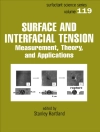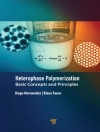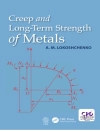This book gives a comprehensive overview of ceramic surface functionalization approaches for ceramic materials including alumina, zirconia, titania and silica and their use as sensors, chemical and biological probes, chromatographic supports for (bio)molecule purification and analysis, and as adsorbents for toxic substances and pollutants. It provides a broad picture of the enormous possibilities offered by surface functionalization and, in addition, addresses the current challenges regarding surface analysis, characterization and stability.
Jadual kandungan
Introduction to Ceramic Materials
Processing Methods for Advanced Ceramics
Surface Modification of Ceramic Materials
Surface Imaging and Structure Methods for Chemical Surface Analysis: Atomic Force Microscopy
Surface Chemical Analysis of Ceramics and Ceramic-Enhanced Analytics
Methods for Electrokinetic Surface Characteristics
Functionalized Surfaces and Interactions with Biomolecules
Bacteria-Surface Interactions: Biofilm Formation and Prevention
Carbon Nanomaterials for Antibacterial Applications
Mesoporous Silica and Organosilica Biosensors for Water Quality and Environmental Monitoring
Ceramic-Based Adsorbents in Bioproduct Recovery and Purification
Mengenai Pengarang
Laura Treccani is Innovation Manager at CSMT Polo Tecnologica, Brescia, Italy. She earned her degree in physics from the Catholic University of Brescia, Italy.
Fabian Meder is Senior Researcher at the Istituto Italionao de Tecnologia in Genova, Italy. He graduated from the South Westphalia University of Applied Science, Germany, andobtained a Ph D in Material Science with highest honors from the University of Bremen, Germany.












